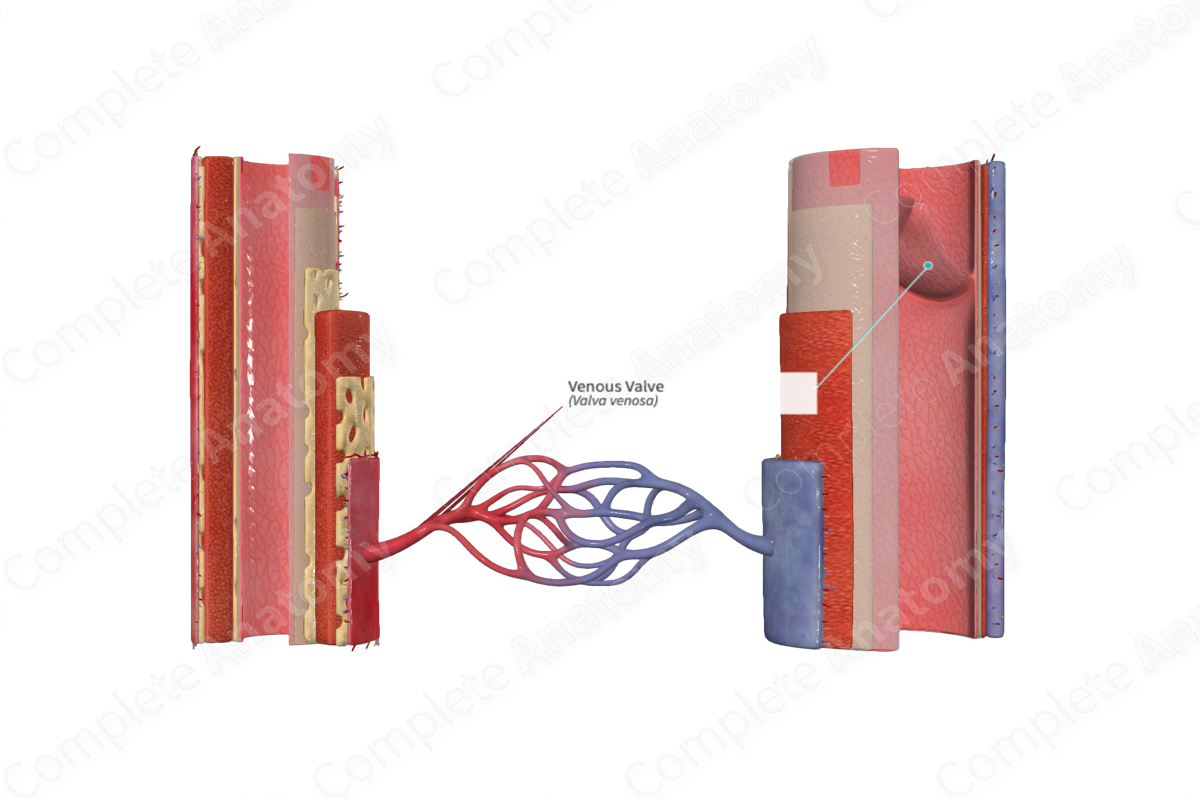
Quick Facts
A venous valve is any of the small cusps or folds found in the tunica intima of many veins, serving to prevent backflow of blood (Dorland, 2011).
Related parts of the anatomy
Structure
Venous valves are unidirectional, i.e. open in one direction only, projections found inside veins. When blood flows along a vein it pushes the valve open, the valve then closes to prevent the backflow of the blood.
Intravenous valves are formed by an inward projection of the tunica intima which is strengthened by collagen and elastic fibers and covered by endothelial cells.
Anatomical Relations
The number of valves in a vein differs depending on the size of the blood vessel, one, two, or occasionally three valves are seen to lie opposite one another.
Function
Venous valves play a vital role in keeping blood moving in one direction, while working against gravity, to ensure venous return.
List of Clinical Correlates
- Peripheral Venous Disease
- Varicose Veins
References
Dorland, W. (2011) Dorland's Illustrated Medical Dictionary. 32nd edn. Philadelphia, USA: Elsevier Saunders.
